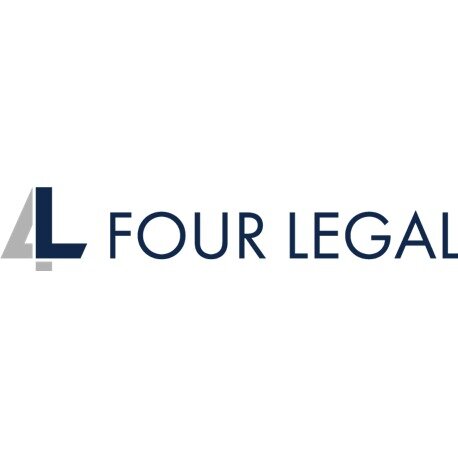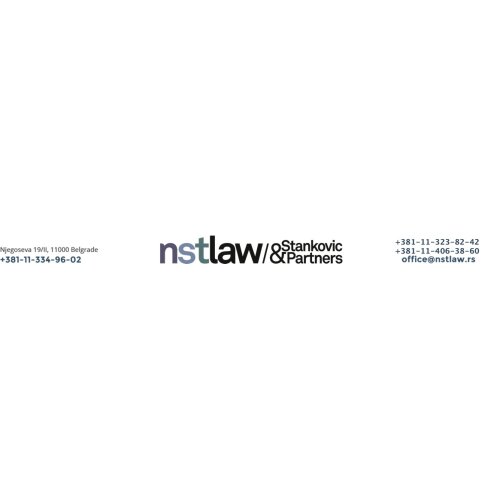Best Restructuring & Insolvency Lawyers in Serbia
Share your needs with us, get contacted by law firms.
Free. Takes 2 min.
Or refine your search by selecting a city:
List of the best lawyers in Serbia
Legal guides written by Business Law office - Advokatska Kancelarija:
- Why Invest In Serbia
About Restructuring & Insolvency Law in Serbia
Restructuring and insolvency law in Serbia provides a legal framework for addressing financial difficulties faced by businesses and individuals. This area of law encompasses processes that allow debtors to reorganize their affairs and, if necessary, enter into formal insolvency proceedings. The objectives include fair treatment of creditors, preservation of viable businesses, and efficient resolution of financial distress situations. Serbia’s approach is primarily governed by legislation that aims to balance the interests of all parties while facilitating economic recovery and stability.
Why You May Need a Lawyer
Legal assistance in restructuring and insolvency is crucial due to the complexity of the laws and high stakes involved. Common situations where people may require a lawyer include:
- Facing creditor actions such as enforcement or foreclosure.
- Operating a company that is experiencing financial distress and needs to restructure debts to avoid insolvency.
- Bankruptcy proceedings as a debtor or as a creditor seeking protection of financial interests.
- Negotiating with multiple creditors to reach a restructuring agreement or mediator involvement in settlements.
- Navigating the judicial insolvency process, including court filings and compliance with statutory obligations.
- Protecting directors, shareholders, or employees during restructuring or insolvency.
Local Laws Overview
Serbia has a dedicated Law on Bankruptcy and an accompanying Law on Consensual Financial Restructuring, which outline the procedures, protections, and obligations for parties facing insolvency or seeking to reorganize financially. Key aspects include:
- The possibility of pre-insolvency restructuring via negotiation between debtors and creditors, with court oversight if needed.
- Formal bankruptcy proceedings can result in either reorganization or liquidation, depending on the debtor's viability.
- Rights and priorities of creditors are specified, including the order in which claims are settled.
- Directors and responsible persons must act to prevent unnecessary worsening of financial difficulties to avoid personal liability.
- Clear timelines and processes for filing bankruptcy petitions, creditor claims, asset evaluation, and debt settlement.
- Protections exist for employees and specific secured creditors in the event of bankruptcy.
Frequently Asked Questions
What is the difference between restructuring and insolvency in Serbia?
Restructuring refers to the process of reorganizing a company's debts and operations to restore financial stability, often before formal insolvency. Insolvency is the legal condition where a company or individual cannot pay debts as they come due, potentially leading to bankruptcy procedures.
Who can initiate bankruptcy proceedings in Serbia?
Bankruptcy proceedings may be initiated by the debtor, creditors, or responsible authorities. The proceedings are conducted through the competent commercial court.
What is pre-insolvency restructuring?
Pre-insolvency restructuring is a process where debtors and creditors negotiate solutions to financial distress before formal insolvency begins. This is encouraged by Serbian law to help avoid bankruptcy.
What happens to the assets of a bankrupt company?
Once bankruptcy is declared, a bankruptcy trustee is appointed to manage and potentially liquidate the company's assets. The proceeds are used to pay off the creditors according to the legal order of priority.
How are creditors' claims ranked in bankruptcy?
Creditors are ranked based on the type of claim they hold, with secured creditors and employees often having preference. Remaining creditors are satisfied from available assets according to the statutory hierarchy.
What duties do company directors have when facing financial problems?
Directors must act to minimize further losses once insolvency looms, including timely initiation of restructuring or insolvency proceedings. Failure to do so can result in personal liability.
Can individuals (not only companies) file for bankruptcy in Serbia?
Yes, both legal entities and individuals can be subject to formal bankruptcy proceedings under Serbian law.
How long does the insolvency process usually last?
The length of insolvency proceedings varies depending on the complexity of the case, but it can take several months to several years to fully complete.
Are there alternatives to court-led insolvency proceedings?
Yes, Serbia encourages consensual financial restructuring as an out-of-court alternative to formal bankruptcy, aiming for an agreement between debtors and creditors whenever possible.
What risks are there for business owners if bankruptcy is not declared in time?
If business owners delay filing for bankruptcy despite clear insolvency, they may be held personally liable for resulting financial losses and may face legal sanctions.
Additional Resources
For those seeking more information or support regarding restructuring and insolvency in Serbia, the following resources can be invaluable:
- Ministry of Justice of the Republic of Serbia - Oversees the framework for commercial, bankruptcy, and civil law.
- Serbian Business Registers Agency (APR) - Maintains the official register of bankruptcy proceedings and provides access to relevant public records.
- Commercial Courts - Handle insolvency and bankruptcy cases, and provide guidance on procedures and required documentation.
- Association of Bankruptcy Trustees of Serbia - Offers information and lists of licensed bankruptcy trustees.
- Serbian Chamber of Commerce - May provide advisory services and support for businesses in difficulty.
Next Steps
If you are experiencing financial distress, uncertain about your legal options, or need advice on restructuring or insolvency, consider the following steps:
- Collect all relevant financial documents and records related to your business or personal finances.
- Assess whether your situation requires immediate action, such as negotiating with creditors or filing for bankruptcy.
- Seek a consultation with a lawyer specializing in restructuring and insolvency. Legal professionals can provide tailored guidance and represent your interests in negotiations or court.
- Stay informed about your rights and obligations under Serbian law by reviewing available resources and, if needed, contacting relevant governmental bodies.
- If you are representing a business, consider the impact on employees, suppliers, and other stakeholders and communicate proactively with them.
Lawzana helps you find the best lawyers and law firms in Serbia through a curated and pre-screened list of qualified legal professionals. Our platform offers rankings and detailed profiles of attorneys and law firms, allowing you to compare based on practice areas, including Restructuring & Insolvency, experience, and client feedback.
Each profile includes a description of the firm's areas of practice, client reviews, team members and partners, year of establishment, spoken languages, office locations, contact information, social media presence, and any published articles or resources. Most firms on our platform speak English and are experienced in both local and international legal matters.
Get a quote from top-rated law firms in Serbia — quickly, securely, and without unnecessary hassle.
Disclaimer:
The information provided on this page is for general informational purposes only and does not constitute legal advice. While we strive to ensure the accuracy and relevance of the content, legal information may change over time, and interpretations of the law can vary. You should always consult with a qualified legal professional for advice specific to your situation.
We disclaim all liability for actions taken or not taken based on the content of this page. If you believe any information is incorrect or outdated, please contact us, and we will review and update it where appropriate.
Browse restructuring & insolvency law firms by city in Serbia
Refine your search by selecting a city.

















